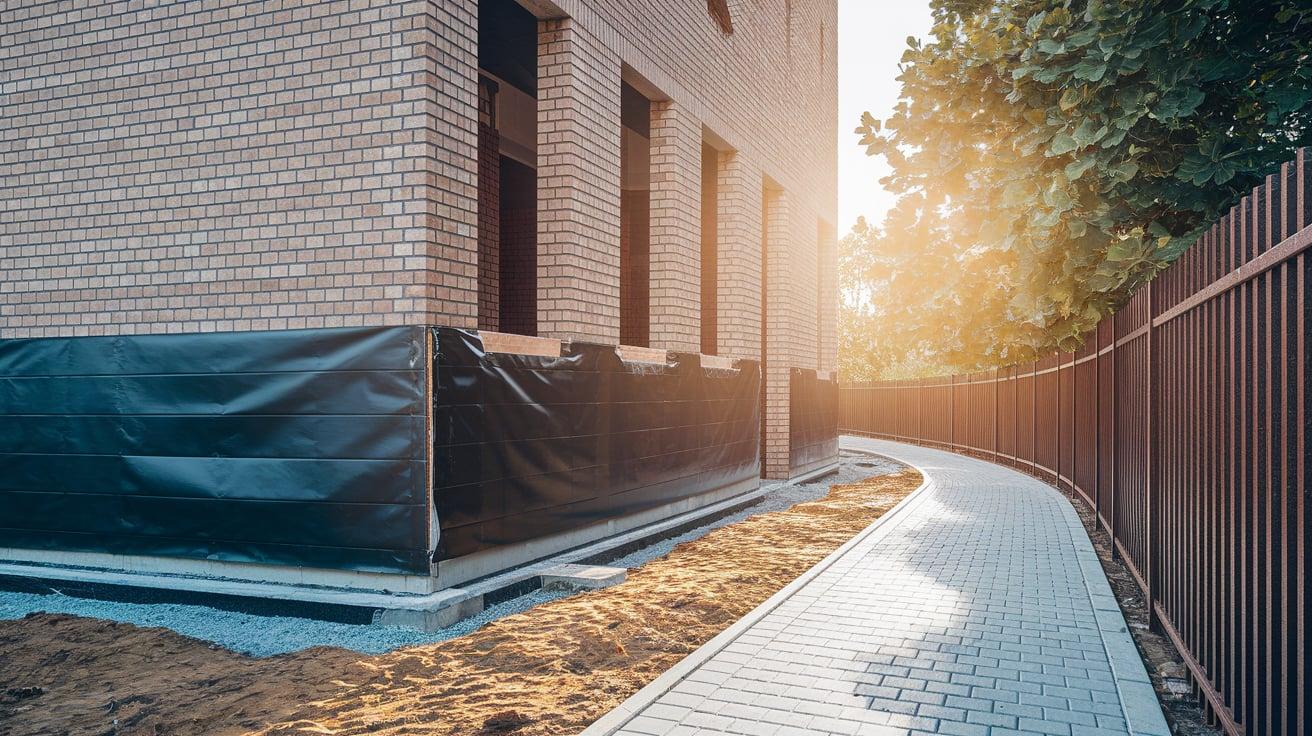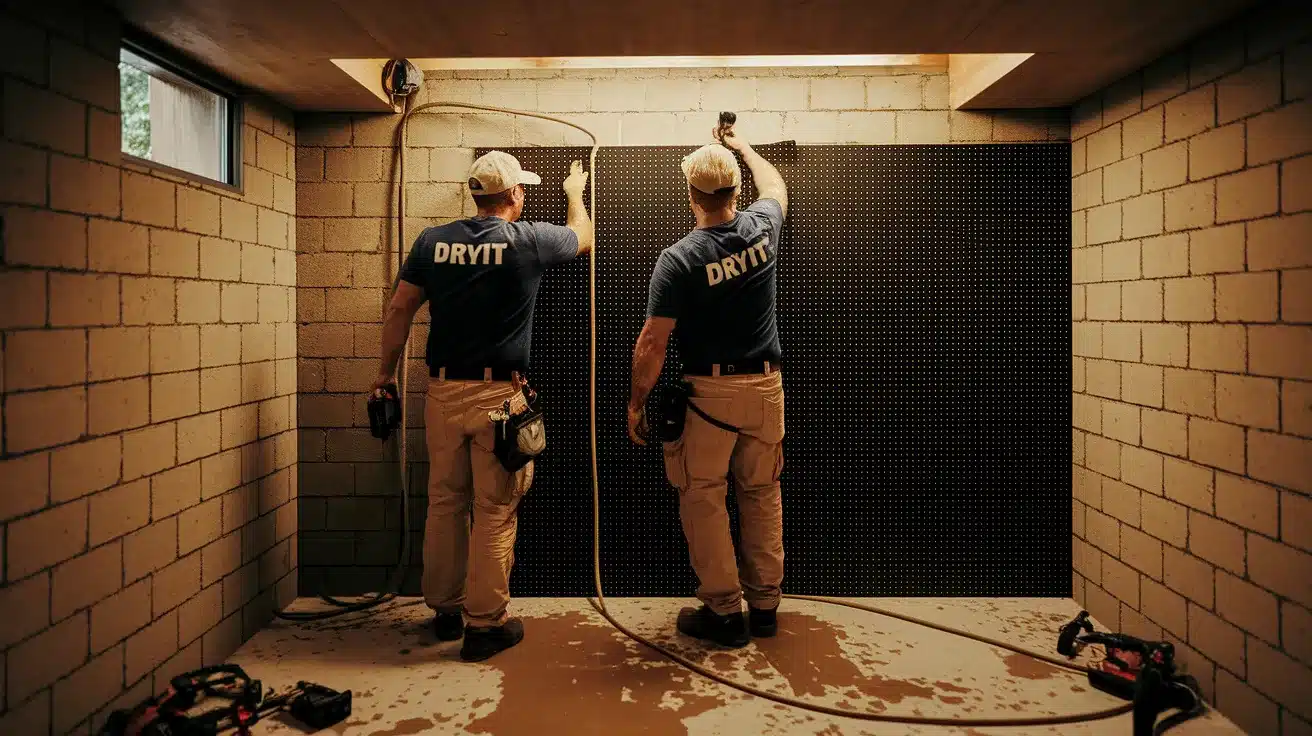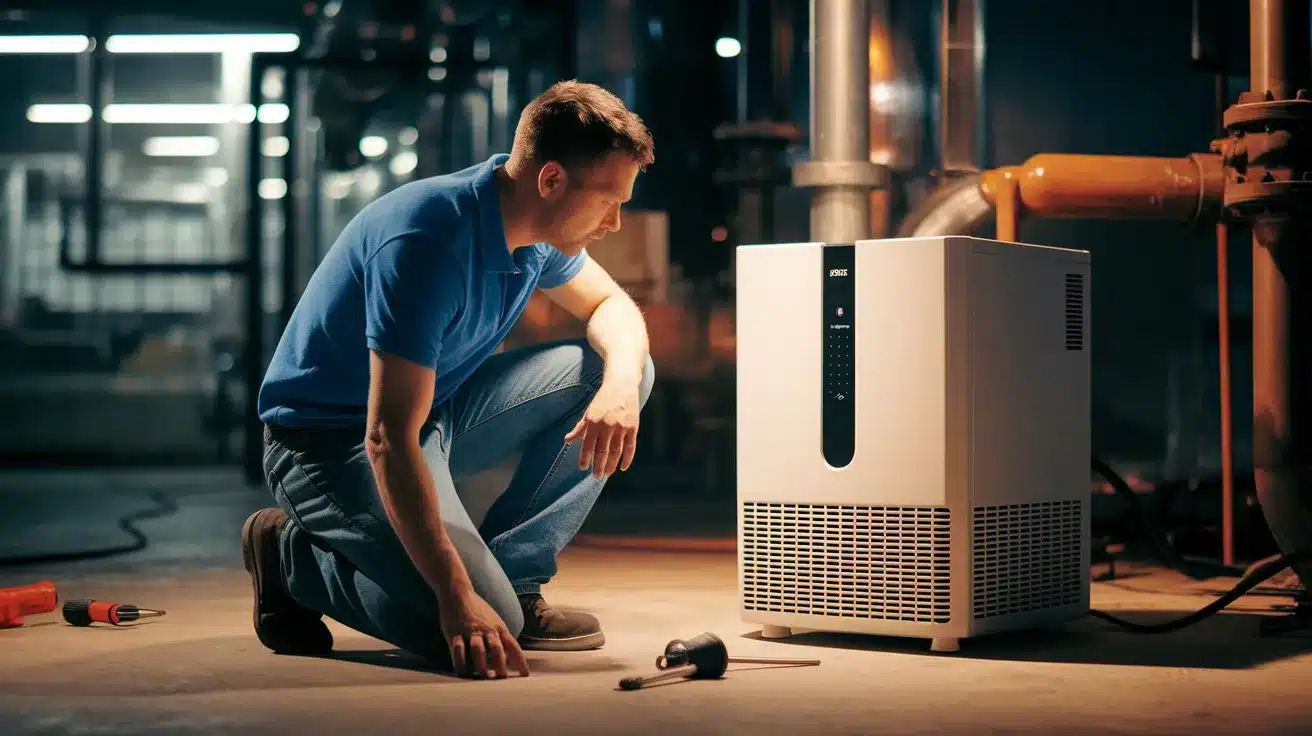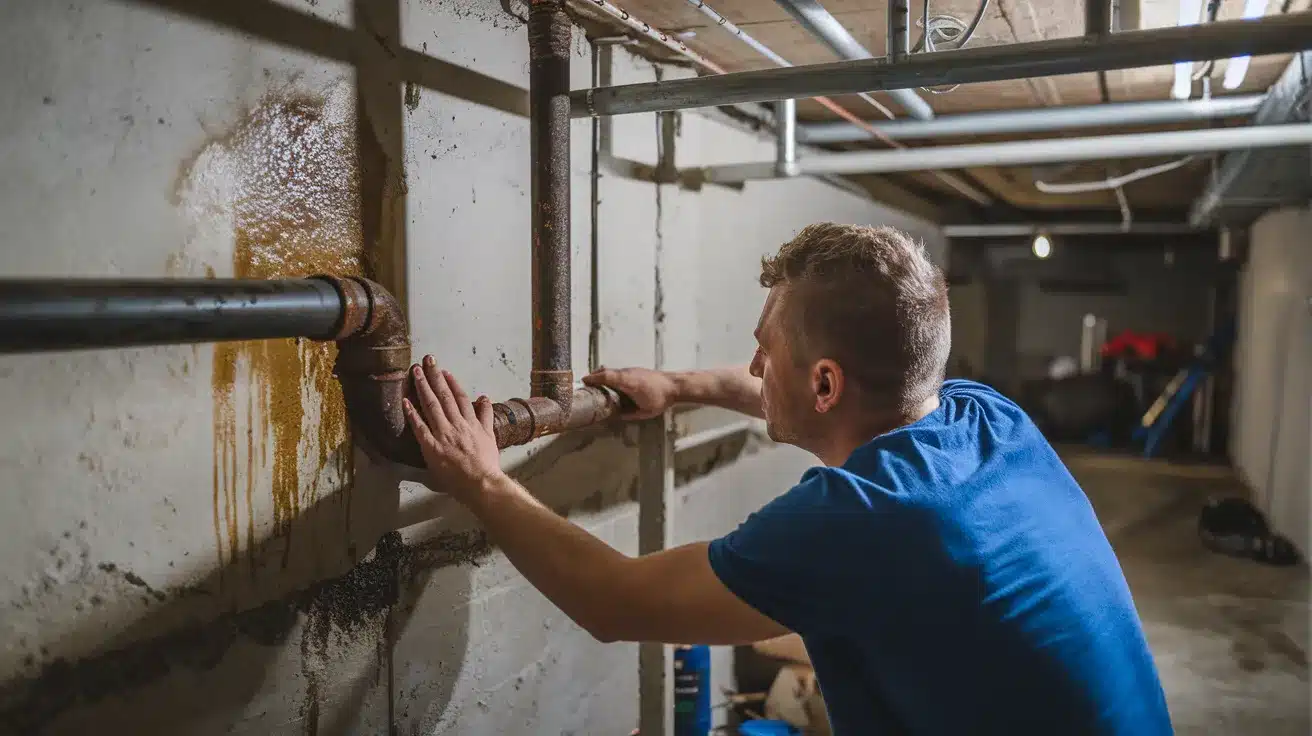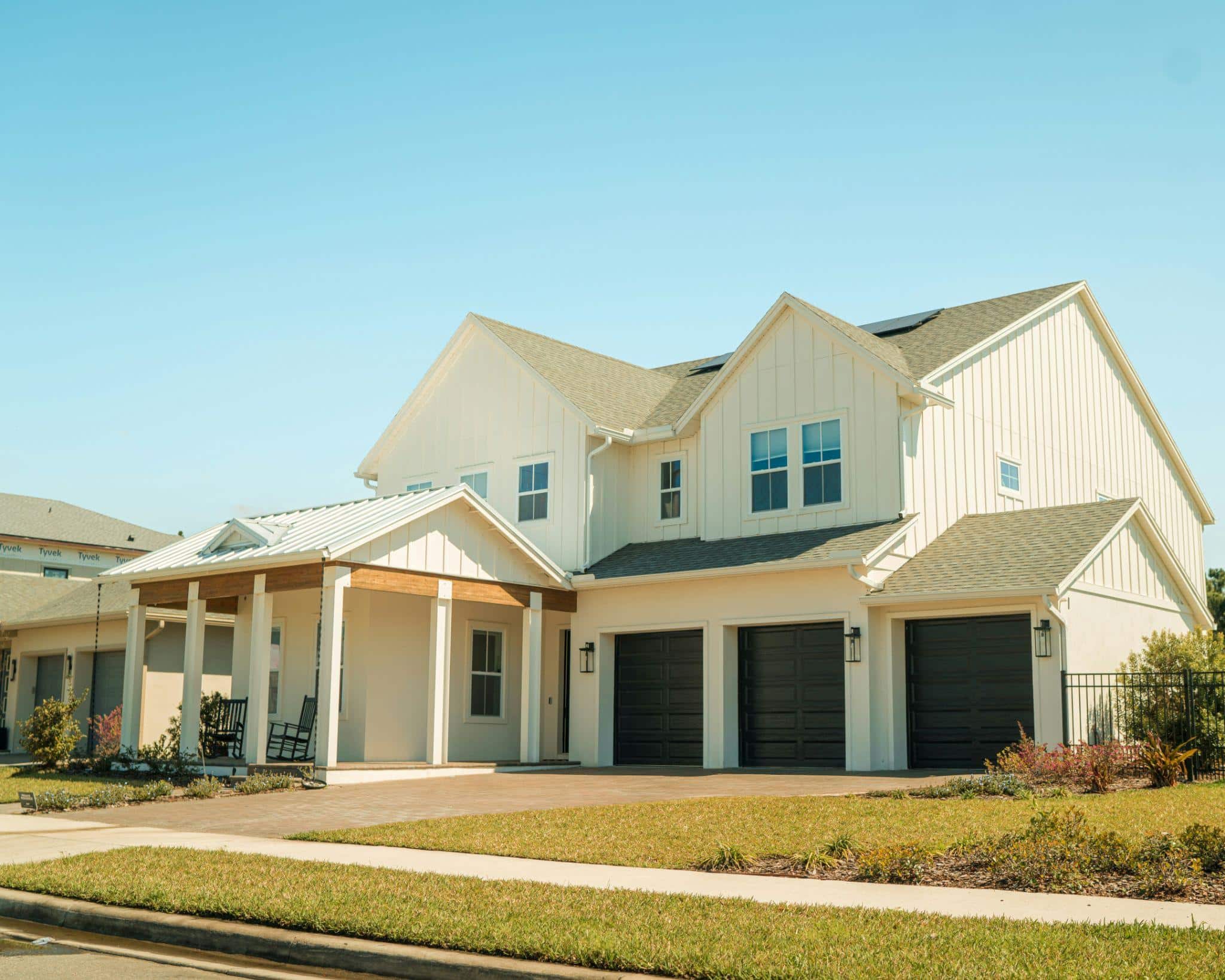I bet you’ve walked into your basement and immediately noticed that musty, damp smell that makes you want to turn around and leave.
That unpleasant odor isn’t just annoying; it’s a warning sign that moisture is building up in your basement, creating the perfect conditions for mold growth and structural damage that could cost you thousands of dollars to fix.
What if I told you that preventing basement dampness doesn’t require expensive contractors or complicated systems? With the right approach, you can keep your basement dry, healthy, and usable year-round using simple methods that actually work.
In this guide, I’ll walk you through proven techniques to stop moisture at its source, control humidity levels, and protect your home’s foundation so you can finally use your basement without worrying about dampness ruining your belongings or your family’s health.
What Is a Damp Basement?
A damp basement is a below-ground space with excess moisture that creates unhealthy conditions. This happens when water vapor builds up in the air or settles on surfaces like walls, floors, and stored items.
Common signs include
- Musty odors that smell stale or earthy
- Visible moisture on walls, pipes, or concrete
- Mold growth in dark corners or on organic materials
- Condensation on cold surfaces like windows and metal
- White chalky deposits on the basement walls
- Peeling paint or wallpaper that won’t stick properly
The moisture comes from multiple sources. Groundwater seeps through tiny foundation cracks. Humid outdoor air enters through gaps around windows and doors. Indoor activities like cooking and showering add water vapor that settles in the coolest part of your home.
Poor air circulation makes things worse. Without proper ventilation, moisture gets trapped and humidity levels rise above 50%. This creates perfect conditions for mold and mildew to grow.
Cold basement surfaces cause warm, humid air to turn into water drops. This condensation process happens year-round but gets worse during humid summer months when the temperature difference is greatest.
Common Causes of Basement Dampness
The main sources of basement moisture problems include:
- Poor drainage around your home – Water pools near the foundation when gutters overflow, downspouts dump water too close to the house, or yard grading slopes toward the basement walls instead of away from them.
- Foundation cracks and gaps – Small cracks in concrete walls, loose mortar joints, and gaps around pipes or windows let ground water seep directly into your basement space.
- High indoor humidity – Activities like cooking, showering, and doing laundry without proper ventilation add moisture to the air that settles in the coolest area of your home.
- Condensation from temperature differences – When warm, humid air meets cold basement walls, floors, or pipes, it turns into water drops that collect on surfaces and create damp conditions.
- Plumbing leaks and water damage – Dripping pipes, leaking water heaters, broken washing machine hoses, or sump pump failures introduce water directly into the basement environment.
- Lack of proper ventilation – Basements without adequate air movement trap moisture and prevent natural drying, allowing humidity levels to build up over time.
Practical Solutions to Fix Damp Basements
Fixing a damp basement requires a complete approach that addresses water sources both inside and outside your home. The best strategy combines multiple methods to create a dry, healthy space.
1. Exterior Waterproofing
Exterior waterproofing prevents water from reaching your basement walls in the first place. This approach tackles the root cause by controlling groundwater and surface water around your home’s foundation.
- Regarding the landscape – Shape the soil to slope away from your foundation so rainwater flows toward the street, not into your basement
- Installing French drains – Place underground drainage pipes that collect groundwater and carry it away from your home’s foundation
- Applying waterproof membranes – Cover exterior foundation walls with special coatings or plastic sheets that block water from getting through
2. Interior Waterproofing
Interior waterproofing manages water that gets past your exterior defenses. These methods work inside your basement to catch, seal, and remove moisture before it causes problems.
- Sealing cracks and joints – Fill foundation cracks with epoxy or special sealants that expand to block water entry points
- Installing interior drains and sump pumps – Set up systems that catch water inside your basement and pump it out before it causes damage
- Using vapor barriers – Install plastic sheets on walls and floors to stop moisture from moving through concrete surfaces
3. Humidity Control
Humidity control manages moisture levels in your basement air to prevent condensation and mold growth. Proper air management keeps your space dry and comfortable year-round.
- Using dehumidifiers – Run machines that pull excess water from the air and keep humidity between 30-50% to prevent mold growth
- Improving ventilation – Add exhaust fans, vents, or air exchangers that move fresh air in and push humid air out
4. Regular Maintenance
Regular maintenance prevents small problems from becoming expensive repairs. Simple upkeep tasks protect your investment and keep your basement dry for years to come.
- Cleaning gutters and downspouts – Remove leaves and debris so water flows properly away from your foundation instead of overflowing
- Checking plumbing systems – Look for leaks in pipes, water heaters, and washing machines, then fix them quickly to avoid water damage.
Health and Safety Considerations for a Damp Basement
- Control moisture levels: Keep humidity below 50% to stop mold spores from growing on walls, wood, and stored items
- Install proper ventilation systems: Add exhaust fans and air exchangers to move contaminated air out and fresh air in
- Prevent wood rot damage: Keep moisture away from floor joists, support beams, and subflooring to maintain structural strength.
- Run air purifiers regularly: Use HEPA filters to capture mold spores, dust, and other pollutants from the basement air.
- Seal air pathways: Block gaps where basement air travels upstairs, preventing contaminated air from spreading throughout your home.
- Stop foundation deterioration: Address water penetration before it creates larger cracks and weakens your home’s concrete foundation.
Best Practices for A Damp Basement
Keeping your basement dry and moisture-free is not a one-time task but an ongoing process. By following a few simple best practices, you can maintain a healthy, dry basement throughout the year, preventing moisture buildup and ensuring your home stays in great condition. Here are some best practices to implement regularly:
| Category | Best Practice | Description |
|---|---|---|
| Moisture Control | Maintain 30-50% humidity | Use dehumidifiers and hygrometers to keep optimal moisture levels |
| Ventilation | Run exhaust fans daily | Operate fans for 2-4 hours to circulate air and remove moisture |
| Drainage | clean gutters twice yearly | Remove debris in spring and fall to ensure proper water flow |
| Inspection | Check for leaks monthly | Examine pipes, water heater, and appliances for early leak detection |
| Foundation | Grade the soil away from the house | Maintain a 6-inch slope over 10 feet to direct water from the foundation |
| Air Quality | test for mold annually | Use professional testing or diy kits to monitor mold levels |
| Waterproofing | Seal cracks immediately | Fill foundation cracks within days of discovery to prevent water entry |
| Storage | Keep items off the basement floor | Use shelves and pallets to protect belongings from moisture damage |
By following these you’ll be well on your way to creating a dry, healthy, and usable space that is free from moisture problems. Regular maintenance and vigilance are key to preventing dampness and protecting your home from costly repairs in the future.
Conclusion
Preventing dampness in your basement doesn’t have to be overwhelming or expensive. By combining exterior waterproofing, interior moisture control, and regular maintenance, you can create a dry, healthy space that protects both your home and your family’s well-being.
Remember that musty smell I mentioned at the beginning? Once you implement these proven strategies, from fixing drainage issues to running dehumidifiers, that unpleasant odor will be gone for good. Your basement can finally become the useful space it was meant to be.
The key is taking action before small moisture problems turn into costly repairs. Start with simple fixes like cleaning gutters and sealing cracks, then work your way up to bigger solutions.



